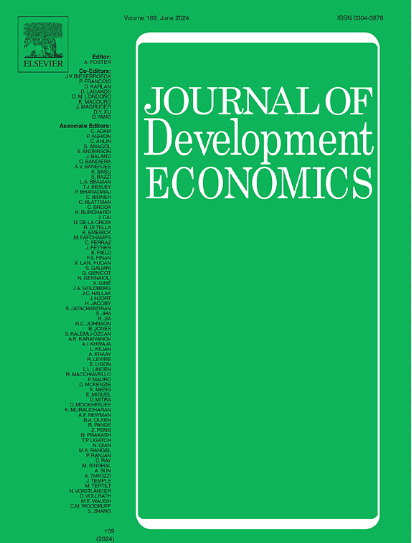Combining survey and census data for improved poverty prediction using semi-supervised deep learning
IF 5.1
1区 经济学
Q1 ECONOMICS
引用次数: 0
Abstract
This paper presents a methodology for predicting poverty using semi-supervised learning techniques, specifically pseudo-labeling, and deep learning algorithms. Standard poverty prediction models rely on limited household survey data, whereas our approach exploits large amounts of unlabeled census data to improve prediction accuracy. By applying pseudo-labeling, we improve key performance metrics across various African regions, where our models outperform conventional approaches to identifying poor individuals. Deep neural networks (DNNs) trained on pseudo-labeled data exhibited area under the curve (AUC) scores ranging from 0.8 to over 0.9, a notable improvement over previous machine learning survey-based methods. Furthermore, random undersampling was key to refining model performance, balancing higher coverage with some reduction in precision. These findings have significant implications for poverty targeting, enabling more accurate identification of poor individuals and supporting better resource allocation.
结合调查和普查数据,利用半监督深度学习改进贫困预测
本文介绍了一种利用半监督学习技术(特别是伪标签技术)和深度学习算法预测贫困的方法。标准的贫困预测模型依赖于有限的家庭调查数据,而我们的方法则利用大量未标记的人口普查数据来提高预测的准确性。通过应用伪标签技术,我们改进了非洲各地区的关键性能指标,在这些地区,我们的模型在识别贫困人口方面优于传统方法。在伪标签数据上训练的深度神经网络(DNN)的曲线下面积(AUC)得分从 0.8 到 0.9 以上不等,与之前基于调查的机器学习方法相比有显著提高。此外,随机欠采样是改进模型性能的关键,在提高覆盖率的同时也降低了精度。这些发现对确定贫困目标具有重要意义,可以更准确地识别贫困人口,支持更好的资源分配。
本文章由计算机程序翻译,如有差异,请以英文原文为准。
求助全文
约1分钟内获得全文
求助全文
来源期刊

Journal of Development Economics
ECONOMICS-
CiteScore
8.30
自引率
4.00%
发文量
126
审稿时长
72 days
期刊介绍:
The Journal of Development Economics publishes papers relating to all aspects of economic development - from immediate policy concerns to structural problems of underdevelopment. The emphasis is on quantitative or analytical work, which is relevant as well as intellectually stimulating.
 求助内容:
求助内容: 应助结果提醒方式:
应助结果提醒方式:


